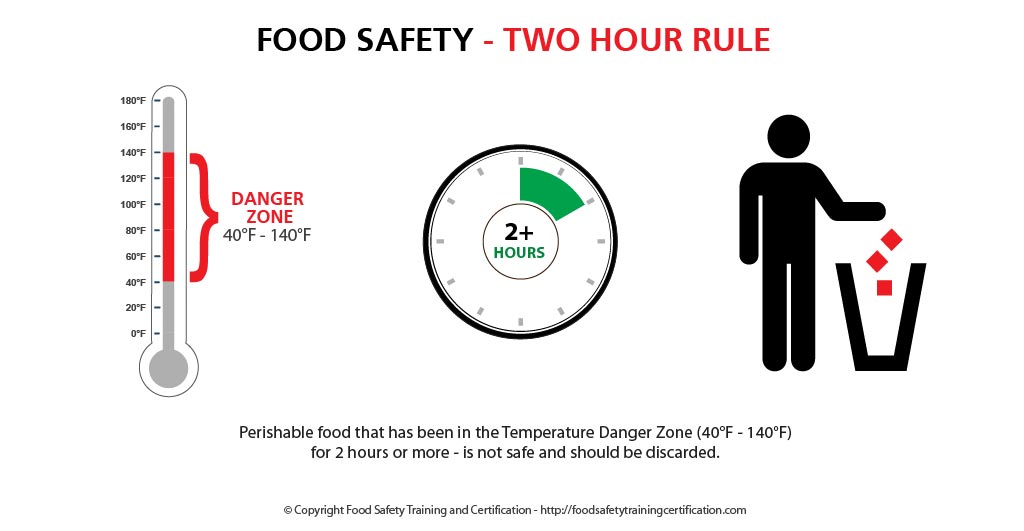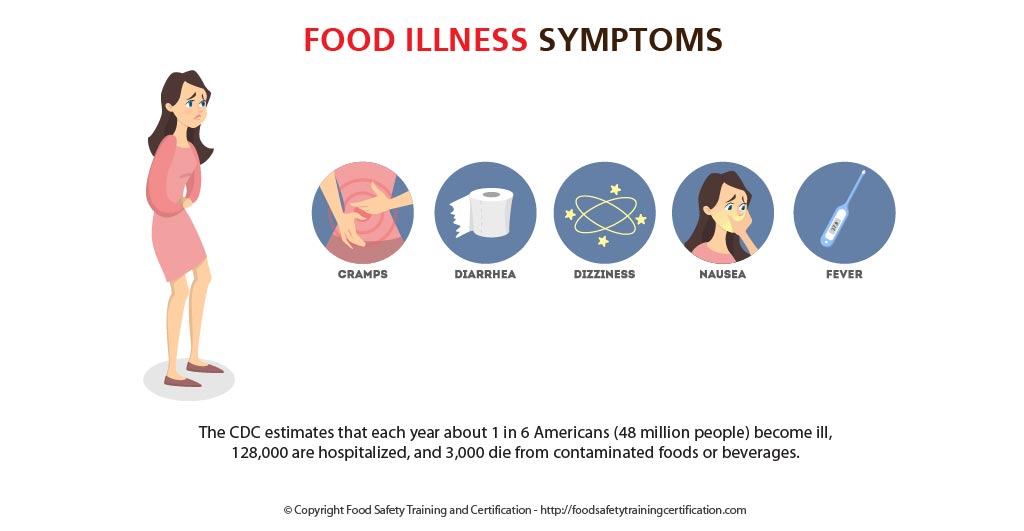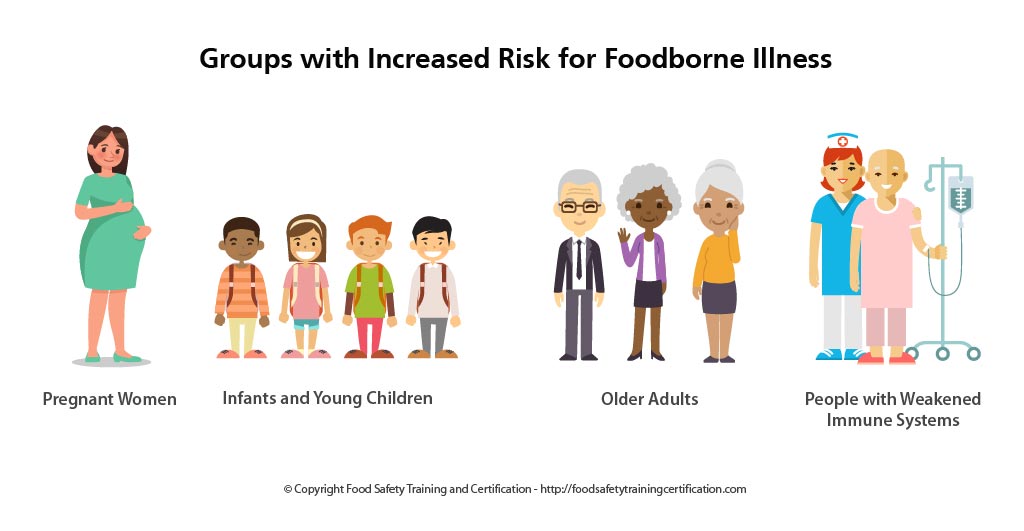Most people don’t think about food safety, until they or someone they know, gets sick after eating contaminated food.
Foodborne illness, also called food poisoning, is a common but preventable condition caused by eating foods contaminated with harmful bacteria, toxin, or chemicals.
According to the CDC, each year about 1 in 6 Americans (or 48 million people) get sick, 128,000 are hospitalized, and 3,000 die of foodborne illnessess. Learn more about foodborne illnesses and what you can do to lower your chances of getting sick.
 Image Source: Shutterstock
Image Source: Shutterstock Anyone can get sick from eating contaminated food. To lower your chances of food poisoning, consider how germs found in contaminated food can make you sick. You can take action to protect yourself and your loved ones by keeping food safe.
The Temperature “Danger Zone”
Do you know what happens when perishable foods are left at (40°F – 140°F) for more than 2 hours? Harmful bacteria like Salmonella, E.coli, and Campylobacter can double in number in as little as 20 minutes! The temperature range in which foodborne bacteria can grow is known as the “Danger Zone”.
One of the critical factors in controlling bacteria in food is controlling temperature. Pathogenic microorganisms (pathogens) grow very slowly at temperatures below 40°F, multiply rapidly between 40°F and 140°F, and are destroyed at temperatures above 140°F.

Perishable Food Safety
Perishable foods are foods that are potentially hazardous inside the Danger Zone. They include:
- Meat: beef, poultry, pork, seafood
- Eggs and other protein-rich foods
- Dairy products
- Cut or peeled fresh produce
- Cooked vegetables, beans, rice, pasta
- Sauces, such as gravy
- Sprouts
- Any foods containing the above, e.g. casseroles, salads, quiches
- Learn about foodborne pathogens, cross contamination, cold and hot food safety, and best practices to prevent foodborne illness.
- Food Manager ANSI Certification: $99.00 - Valid in all States
- Food Handler Training: Only $7.00!
- 10% OFF: Enter Promo Code "train10off" at Checkout
Foodborne Illness Signs and Symptoms
Foodborne bacteria, in large enough numbers, may cause food poisoning, symptoms similar to gastroenteritis or “stomach flu”. Some of the symptoms include stomach cramps, nausea, vomiting, diarrhea, and fever.
Foodborne illness symptoms can begin as early as shortly after and as late as weeks after consumption of the contaminated food.

Steps to Better Food Safety
To prevent or reduce food illness it is recommended to:
- Always clean your hands, utensils and food surfaces before using them. Good hygiene and cooking foods thoroughly are the best and easiest ways to avoid food poisoning.
- Separate foods and avoid cross-contamination. Never store raw foods next to ready-to-eat foods;
- Cook foods to a safe temperature. Check them using a food thermometer:
- ground meats: 160°F
- fresh beef, veal, and lamb: 145°F
- poultry: 165°F
- pork and ham: 145°F
- egg dishes: 160°F, cook eggs until whites are firm
- leftover dishes and casseroles: 165°F
- fish: 145°F or flesh can come apart with a fork
- shellfish: cook until shells open on their own
- Refrigerate or freeze perishable foods within two hours since purchase or preparation. Defrost food safely in the refrigerator.

Vulnerable Groups
Anyone can get a foodborne illness, but people in certain groups are more likely to get sick and to have a more serious illness. These groups are:
- Young children
- Pregnant women
- Adults aged 65 and older
- People with weakened immune systems

These vulnerable groups should take extra precautions and avoid the following foods:
- Raw or rare meat and poultry
- Raw or undercooked fish or shellfish
- Raw or undercooked eggs or foods containing them ( cookie dough and homemade ice cream)
- Fresh sprouts
- Unpasteurized ciders or juices
- Unpasteurized milk and milk products
- Uncooked hot dogs
Summary
It is very important to understand what, why, and how foods can make you sick, but more importantly, the food safe principles and procedures to prevent foodborne illnesses.
